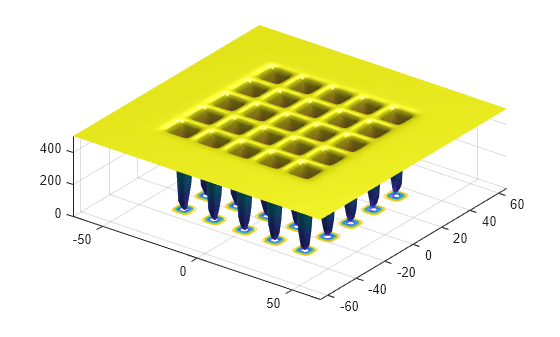Optimize Function Using particleswarm, Problem-Based
This example shows how to minimize a function using particle swarm in the problem-based approach when the objective is a function file, possibly of unknown content (a "black box" function). The function to minimize, dejong5fcn(x), is included when you run this example.
dejong5fcn

Create a 2-D optimization variable x. The dejong5fcn function expects the variable to be a row vector, so specify x as a 2-element row vector.
x = optimvar("x",1,2);To use dejong5fcn as the objective function, convert the function to an optimization expression using fcn2optimexpr.
fun = fcn2optimexpr(@dejong5fcn,x);
Create an optimization problem with the objective function fun.
prob = optimproblem("Objective",fun);Set variable bounds from –50 to 50 in all components. When you specify scalar bounds, the software expands the bounds to all variables.
x.LowerBound = -50; x.UpperBound = 50;
Solve the problem, specifying the particleswarm solver.
rng default % For reproducibility [sol,fval] = solve(prob,"Solver","particleswarm")
Solving problem using particleswarm. Optimization ended: relative change in the objective value over the last OPTIONS.MaxStallIterations iterations is less than OPTIONS.FunctionTolerance.
sol = struct with fields:
x: [-31.9751 -31.9719]
fval = 0.9980
See Also
particleswarm | fcn2optimexpr | solve